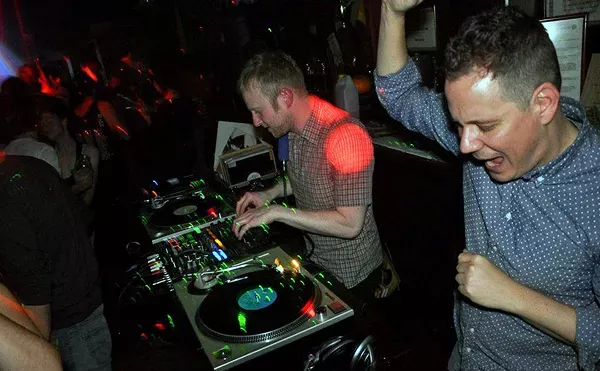The evolution of jazz is largely a story of titans rearing up out of the bands of those before them: Louis Armstrong came out of King Oliver’s group, Charlie Parker out of Jay McShann’s, Miles out of Parker’s and ’Trane out of Miles’. On it goes.
But among major jazz artists, Ornette Coleman is the closest thing to Athena springing from the head of Zeus or Gort lumbering from the flying saucer in The Day the Earth Stood Still. By way of a hardscrabble youth in Texas, time in New Orleans and with bands on the road, Coleman arrived in Los Angeles in 1953 with a white plastic alto sax; a troubled stint under the obscure Pee Wee Crayton was the strongest reference on his résumé. Rebuffed by the mainstays of the scene, he gathered a circle of young acolytes willing to hear what he heard in his head, and in 1959 they hit New York’s famed Five Spot for the most infamous club gig in the history of jazz. Socialites, painters, dancers, fellow musicians and the attendant curious flocked to take sides on whether Coleman was a passing fraud or the future of jazz. Strong opinions escalated into fisticuffs. One night a car was torched. On another, Coleman took a punch to the face in the club’s kitchen.
“New things were happening, not only in music, but in people’s minds every night from that music,” Charlie Haden, the group’s bassist, once told Terry Gross of NPR’s “Fresh Air.” It was music that broke rules: no chords, unpredictable melodies, confusion about who was soloing and who was backing up, surging pulses in lieu of steady swing.
Four rocky decades later, Coleman, who turns 74 Friday, has changed the language of jazz, recorded about 50 albums as bandleader (the most recent being 1997’s Colors: Live From Leipzig), appeared with symphonies and body piercers, and won a MacArthur “genius grant.” Rather than settle down and repeat past triumphs, he keeps tinkering with (and sometimes overhauling) his sound. In a sense, he’s made the jazz world reflect his vision. Yet his own world seems fated to always remain unsettled, down to the way he strings sentences together.
From the office of his Artists House label in Norwalk, Conn., Coleman’s former producer-manager-lawyer, John Snyder, talks about the magnetism of Coleman and what it was like to be drawn into Coleman’s world in the ’70s and ’80s. Snyder recalls taking a limo to the airport to meet Coleman who was arriving from Paris for a duet recording session with Haden. (It was later released as part of The Golden Number on A&M.)
“I was completely taken with him,” says Snyder of Coleman, who strolled off the plane decked in a mink coat. Snyder, then in his late 20s, would be invited to hang out and then to help sort out some of Coleman’s legal problems. Eventually Snyder found himself and his label’s staff of a dozen entirely consumed with Coleman; Coleman, in one of his many reversals of fortunes, wound up living in the back office for a while.
“He got into my head, even my speech has been affected for the last 20 or 30 years,” says Snyder. “He’s such a powerful, positive force that you can’t really be around him without being changed — and I would say for the better.”
And Coleman’s speech is as idiosyncratic as anything about him, a sort of window on his thinking.
When he started talking about his legal issues, says Snyder, “I couldn’t make sense of it because of his syntax. And his way of speaking is so unique and so different from my experience. So I asked him if I could tape him and then study those conversations later. As a lawyer, I had to get the facts straight.”
Which reminded this writer of an interview transcript he’s held onto for years, including this riff from Coleman on his art where the homespun shifts to the abstract and back:
When I first came to New York, I had such a positive and negative reception. I didn’t try to prove to anyone whether I was right or wrong, but to try to see how good I could be, to continue to do what I’d done. Eventually it just became natural to accept the fact that I was doing what I was doing. I just kept writing and trying to get a band together. To me, I’ve never been able to think of trying to put another musician down to protect myself or get myself a gig. … I always say there is no bad music, there is only bad musicians, so I have never tried to be in competition or try and dominate any state of the music language or anything. … I think more good has come out than not. Maybe more musicians have felt closer to the concept that I’m working on rather than being against the concept.
Says Snyder: “He talks in elliptical phrases. It’s just kind of like his music. … Everything is connected in Ornette’s head. You don’t talk about one thing. It’s always relative. It’s absolute and relative. He’s got these very distinct ideas, but they’re all flying in the same cage or universe as all the other ones. So he’s just different.”
But the words on the page can’t convey the power of Coleman’s presence. Snyder recalls that Coleman organized the Artists House staff into a band where “we’d sit in a circle and play our heads off and not have any idea of what we were doing.” But out of that cacophony, Coleman could listen to a player and make a suggestion — maybe two notes to play with — and it would make sense as an entry into the musical collage.
One time, Snyder says, he was visiting Coleman, who had just written a piece of music for trumpeter Don Cherry, one of Coleman’s most important disciples from the L.A. and Five Spot days, a wonderful musician.
Coleman asked Snyder, who was trained as a trumpeter, to play it for him. Snyder tried to beg off, but Coleman insisted. Snyder says, “So I played it, and it was kind of half-assed. So he said, ‘Play it like this.’ He picked up his alto and I played it with him and it was the first time I’ve ever had the experience of playing music with no control over it. He just pulled the music right out of me; the same way he played it, I was right there with him. It was stunning, it was startling. All of a sudden, it hit me, that’s how he and Don did it. They just flew around the music like they were one person. … If it hadn’t happened to me, I wouldn’t have believed it. And I think he can do it to anyone if he can do it to me.”
Through his career, Coleman has kept the shape of his compositions and ensembles as fluid as his solos. He writes dirges, blues, Latin-tinged numbers, sonic tidal waves, Colemanized extensions of bebop, symphonies, gnarly funk, ballads to make you cry; he’s even recorded — along with Jerry Garcia — a C&W ditty worthy of “Hee Haw.” As for his groups, he didn’t invent the pianoless combo with his Five Spot band, but more than anyone else he defined it. He pioneered big ensembles with multiple rhythm sections (double quartets, for instance). And characteristically, when he ran up against the staggering economic difficulties of working with symphony orchestras, he opted for way fewer strings amped way, way up — electric guitars and basses — in his own radical take on fusion. Famed for eschewing pianists, Coleman did an about-face and hired former Detroiter Geri Allen and others in the ’90s. These days he’s working with his son Denardo on drums, veteran cutting-edge jazz bassist Greg Cohen, and a second bassist, Tony Falanga, whose background is classical and who had little experience with improvisation until joining Coleman.
And while Coleman may pull incredible music from those around him, what is most important about his music is this: At the center of it all, he sounds like a man pulling from deep within himself. The most furious, flurrious passages are punctuated with a human wail, at once vulnerable and affirmative, totally individual, Coleman’s essential blues. When he talks about his musical theories, or about the desire to solo as if he has no memory, or about escaping the prisons and cages of standard song form, he seems to be saying that rather than repeating the past, the artist can sing the truth of the moment.
Producer John Snyder has been behind more than 200 records, a number of them Grammy winners, on numerous labels. For more about Snyder and his current label, see artistshousemusic.com.
Ornette Coleman appears at Hill Auditorium in Ann Arbor, Friday, March 19, at 8 p.m. Call 800-221-1229.
W. Kim Heron is the managing editor of Metro Times. E-mail [email protected]





